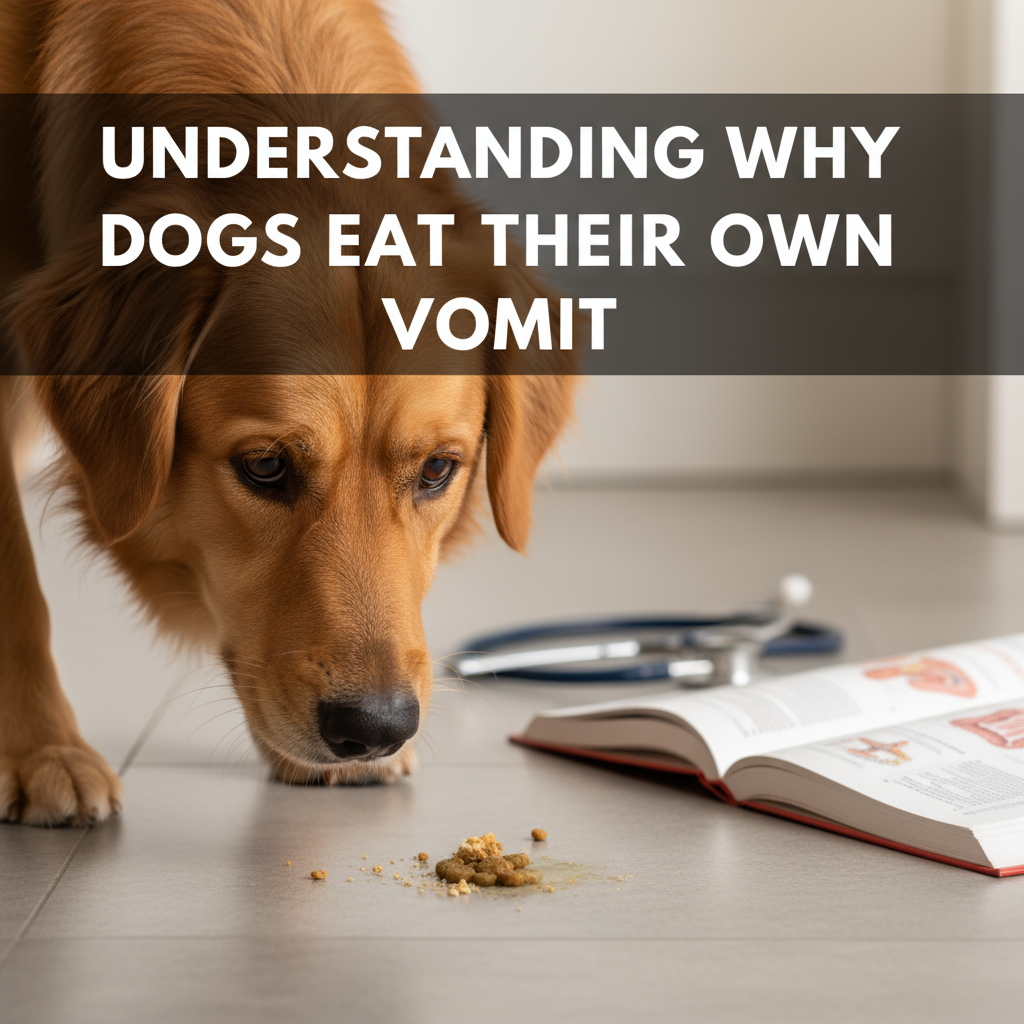Why Do Dogs Eat Their Own Vomit?
Estimated reading time: 5 minutes
- Dogs’ extraordinary sense of smell
- This behavior can be traced back to evolutionary and instinctual origins, with scavenging roots.
- Puppies
- Eating too quickly can lead to vomiting, which dogs may then consume as a part of their digestive strategy.
- While not typically alarming, frequent vomiting should prompt a visit to the veterinarian.
Table of Contents
- Superior Sense of Smell
- Evolutionary and Instinctual Origins
- Early Life Learning
- Eating Too Quickly
- Health and Safety Considerations
- When to Seek Veterinary Attention
- Conclusion
Superior Sense of Smell
One primary reason dogs eat their own vomit lies in their extraordinary sense of smell. Dogs have approximately 300 million olfactory receptors in their noses, compared to just about 6 million in humans. This vast difference leads to a vastly superior ability to detect and differentiate smells (source).
When a dog vomits, what to humans appears repulsive is simply a source of intriguing smells to dogs, as they can identify the food particles still present in the vomit. Roughly 12% of the air dogs breathe gets diverted into a specialized area in the back of the nose dedicated to processing smells (source). This capability enables them to perceive their vomit not merely as an unpleasant mess but as a potential food source.
Interestingly, while dogs may recognize the bile and other unpleasant odors that accompany vomit, they are not as deterred by these scents as humans are. For them, vomit can still hold the promise of nourishment, making the act of consuming it a logical, if unappealing, choice.
Evolutionary and Instinctual Origins
To fully understand this behavior, it’s essential to consider the evolutionary background of dogs. As scavengers by nature, dogs’ wild ancestors often consumed partially digested food to ensure they wasted as few nutrients as possible. This instinct has persisted in domestic dogs as a survival mechanism to reclaim undigested food after sickness (source).
In wild settings, wolves and wild dogs would rapidly consume large chunks of food to avoid losing it to competitors. After a while, they might vomit this food and re-chew it in a safer environment, which allowed them to extract every ounce of nutrition possible. Domesticated dogs have retained this ancestral reflex, even in the absence of direct competition for food.
Moreover, another evolutionary driver for this behavior relates to predator avoidance. In the wild, vomiting can signal illness, which may attract unwanted predators to a sick animal. Therefore, it is instinctual for dogs to eat their vomit as a way to conceal evidence of being unwell (source). This instinct prevails despite domesticated dogs no longer facing direct threats from predators in our homes.
Early Life Learning
Puppies are also influenced by early life experiences regarding vomit-eating behavior. Mother dogs regurgitate food for their young, providing them with a form of “nature’s wet food.” This process introduces puppies to solid food and creates strong positive associations with the act of eating regurgitated material (source).
When mothers leave their puppies to hunt, they return and regurgitate portions of their meals for their young to consume (source). This nurturing behavior likely reinforces the idea that vomit is a safe and valuable source of sustenance.
Eating Too Quickly
Another factor contributing to this behavior is how quickly a dog eats. Food-motivated dogs often gulp their kibble without taking the time to chew it adequately. When dogs vomit soon after eating, it typically indicates that they consumed pieces that were too large or not digested properly for their stomach acids to break down effectively (source).
In these instances, the body triggers regurgitation, allowing the dog to re-chew and further break down the meal. This functions as “nature’s checkpoint” to ensure that the food is processed correctly. Therefore, dogs might consume the regurgitated food as part of their normal digestive strategy.
Health and Safety Considerations
While it’s generally normal for dogs to eat their own vomit occasionally, there are important health considerations to keep in mind. Frequent vomiting can signify underlying health issues that require attention (source). Conditions associated with dangerous vomiting and indiscriminate eating of vomit may include:
- Gastrointestinal Issues: Chronic conditions that impede digestion.
- Infections or Viruses: Such as parvovirus, which can cause severe vomiting.
- Pancreatitis: An inflammation of the pancreas can be triggered by fatty foods or other factors.
- Dietary Intolerances: Certain foods that do not mesh well with the dog’s digestive system.
- Foreign Body Ingestion: Objects that block the digestive tract can lead to vomiting.
- Toxic Substances: Exposure to harmful bacteria like salmonella can pose serious health risks (source).
Eating vomit can exacerbate health concerns or lead to further complications if these underlying conditions exist. Additionally, it’s important to note that dogs should never eat another dog’s vomit, as this can transmit diseases, parasites, or infections. The vomiting dog may perceive the act as food theft and respond defensively, particularly if it is prone to resource guarding (source).
When to Seek Veterinary Attention
An occasional “eat, regurgitate, re-eat” cycle can be part of normal canine behavior when dogs are dealing with larger food pieces (source). However, if a dog shows patterns of regular vomiting or unusual vomiting habits, it’s time to consult with a veterinarian (source).
Determining whether this behavior is harmless or symptomatic of a more serious condition can be complex. A vet’s professional guidance is invaluable for addressing any concerning patterns and ensuring your dog remains healthy.
Conclusion
In summary, dogs eating their own vomit can be perplexing, but understanding the underlying instincts and biological factors can shed light on this behavior. Their remarkable sense of smell, evolutionary legacy, early life learning experiences, and digestion-related tendencies all play a role in this natural conduct. While typically not a cause for alarm, it’s essential to monitor your pets for signs of distress or health issues and consult with professionals when necessary.
For more pet care tips and guides, visit Pet Blog.
